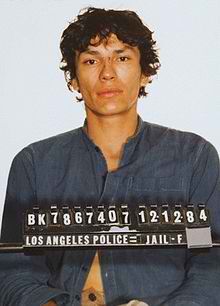Psychopathy
The Dysfunctional Integration of Serial Killers in Society
Serial killers defy our “collective consciousness.”
Posted August 24, 2020

According to the functionalist theoretical perspective of sociology introduced by the ground-breaking theorist Emile Durkheim in the nineteenth century, society is defined by a “collective consciousness” in which the members of society are invested and work together to protect.
In his classic research, Durkheim identified two concepts that he called “social facts"—integration and regulation—which offer powerful insights into the meaning of serial homicide in the modern world. More specifically, a lack of functional integration at the individual level and regulation at the societal level can help to explain the terrible actions of serial killers.
It must be remembered that Durkheim did not attribute social problems such as suicide or serial homicide to personal or individual-level pathologies. On the contrary, he attributed such phenomena to problematic conditions in society. Let’s explore the importance of integration and regulation to our understanding of serial homicide.
Integration, simply stated, is the strength of the individual’s attachment to society. Many institutions provide for the development and strength of integration, including religion, marriage, family, military service, and other organizations that give an individual a sense of purpose and belonging. Social clubs, charities and professional associations provide other opportunities for meaningful connections.
These important institutions and organizations increase integration, strengthen attachment to society and, thereby, help to prevent unwanted, disruptive behavior by individuals. Durkheim also said that certain galvanizing moments in the history of a civilization can lead to powerful social integration.
He used the term “collective effervescence” to describe a society’s jubilant reaction to key historical events. Powerful examples of collective effervescence in the U.S. were manifested in the patriotic fervor of the public during World War II and in the aftermath of the 9/11 terrorist attacks.
Durkheim believed that individuals who are not properly integrated into society or its key institutions such as religion, work and family are particularly at risk to engage in deviant or criminal behavior. He said that individuals who lack functional integration are not protected from the temptations or strains of society that lead to deviance and crime.
I believe that Durkheim’s perspective offers important insights into the actions of serial killers in the modern world because such criminals typically feel disconnected both emotionally and psychologically to society. For example, Richard Ramirez, David Berkowitz, Aileen Wuornos, and Joel Rifkin who were serial killers, as well as dysfunctional loners and misfits, all demonstrated a lack of social integration.
Even serial killers who outwardly appear to be properly integrated such as Ted Bundy or Dennis Rader generally shun society and its major institutions. They may mimic normalcy and appear to be well adjusted but are really obsessed with murder. Thus, a lack of social integration is an important characteristic of modern-day serial homicide.
In contrast to a lack of integration, Durkheim stated that excessive social integration can result in obsessive attachments that can also lead a person to carry out antisocial or even criminal behavior. Excessive integration can foster a belief that certain criminal activity is in the best interests of society as a whole. Unnatural and misguided attachments are evident in the actions of terrorists and suicide bombers, for example, and the perpetrators of hate crimes against homosexuals.
Excessive integration can be seen in the actions of certain serial killers, too. For example, mission-oriented serial killers who seek to improve the world by killing specific types of people they abhor often demonstrate excessive attachment to twisted or misguided social norms. A mission-oriented killer will justify his murders as being necessary to rid the world of a group of people he believes to be undesirable or evil. Such groups may include prostitutes, the homeless, or those who are different from the killer in terms of race, ethnicity, religion, or sexual orientation.
The second social fact identified by Durkheim in his classic research, i.e., regulation, or the degree of external constraints on people is also crucial to an understanding of deviant behavior. Antisocial and criminal activity including serial murder can occur when societal regulation is either too low or too high.
It must be remembered that serial killers are cunning and opportunistic. They are predators in every sense of the word. Serial killers will strike when they perceive law enforcement presence and regulation to be weakest because those conditions dramatically increase the chance of successfully committing murder and evading capture.
Highly organized serial killers such as Ted Bundy and John Wayne Gacy plan their murders meticulously in advance and consider the likelihood of success before launching an attack. Such serial killers will often make multiple contingency plans in the event of unforeseen problems and have several predetermined escape routes. They may also delay an attack until they believe that the circumstances and timing are just right for murder.
Durkheim also noted that excessive regulation and oppressive authority can actually serve as a stimulus for crime in certain individuals and circumstances. Among arrogant and psychopathic serial killers, for example, excessive and highly visible regulation can provide an attractive challenge. Psychopathic killers are generally grandiose, narcissistic, and reject the laws of society.
For example, Dennis Rader (BTK) was a psychopathic predator who believed that he was intellectually superior to his police pursuers. A malignant narcissist such as BTK will strike regardless of the level of police regulation pitted against him because he believes that he is invulnerable. BTK was so convinced of his superiority to law enforcement authorities in Wichita that he amused himself over the years by sending letters to them boasting of his exploits and offering clues to his unsolved crimes.
Intelligent and cunning serial predators of the organized variety are not the only category of killer that may be undeterred by police regulation, however. In contrast to the meticulous and organized BTK, a mentally unstable, disorganized serial predator such as Jack the Ripper will also commit murder regardless of the presence or strength of regulatory forces, but for different reasons. Unlike a cold and calculating organized killer in the vein of BTK, a disorganized killer such as the Ripper will strike whenever the need to kill becomes insatiable simply because he cannot control himself. In fact, no level of regulation will deter him.
Such are the peculiarities of serial killers.




